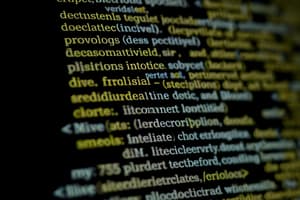Podcast
Questions and Answers
What is Natural Language Processing (NLP)?
What is Natural Language Processing (NLP)?
The branch of AI focused on the interaction between computers and humans through natural language.
Which of the following are key NLP tasks? (Select all that apply)
Which of the following are key NLP tasks? (Select all that apply)
- Image Recognition
- Text Summarization (correct)
- Language Translation (correct)
- Speech Recognition (correct)
What is Natural Language Understanding (NLU)?
What is Natural Language Understanding (NLU)?
A subset of NLP focusing on comprehending human language.
Natural Language Generation (NLG) focuses on understanding language inputs.
Natural Language Generation (NLG) focuses on understanding language inputs.
What is the process of Tokenization in NLP?
What is the process of Tokenization in NLP?
What are the functions of an AI agent?
What are the functions of an AI agent?
What types of environments exist in AI?
What types of environments exist in AI?
A self-driving car operates in a fully observable environment.
A self-driving car operates in a fully observable environment.
Match the following environments with their definitions:
Match the following environments with their definitions:
Flashcards are hidden until you start studying
Study Notes
Natural Language Processing (NLP)
-
NLP enables computers to understand and generate human language.
-
Key NLP Tasks:
- Language translation
- Text summarization
- Speech recognition
-
NLP Process in Action:
- Tokenization: Sentence is broken into individual words or tokens.
- Part-of-Speech Tagging: Assigns a grammatical role to each word, clarifying sentence structure.
- Named Entity Recognition: Identifies and classifies entities in the text, like "New York City."
- Intent Recognition: Determines the user's intent from the structure and entities recognized.
- Response Generation: Crafts a response aligned with the recognized intent.
Natural Language Understanding (NLU)
-
A subset of NLP focused on comprehending the meaning and context of human language.
-
Key NLU Tasks:
- Entity Recognition: Identifying and classifying key elements in text.
- Intent detection: Understanding the purpose behind a user's input.
- Contextual Relevance: Assessing the significance of language in context.
-
NLU Process in Action:
- Contextual Analysis: Understanding the sentence's overall meaning.
- Entity Recognition: Identifying important entities in the text, like "Italian restaurant."
- Intent Detection: Recognizing the user's intent (e.g., find a restaurant).
- Sentiment Analysis: Assessing the user's feelings towards the request (e.g., “good” indicates preference for quality).
- Contextual Relevance: Understanding "nearby" refers to the user’s current location for accurate suggestions.
- Relevant Response Generation: Provides suggestions based on the analysis.
Natural Language Generation (NLG)
-
A branch of NLP that transforms structured information into human-like language.
-
Key NLG Tasks:
- Report generation: Produces written summaries from data sets.
- Automated journalism: Writing news articles from factual inputs.
- Conversational agents: Generating dialogues for chatbots or virtual assistants.
-
NLG Process in Action:
- Data Input & Analysis: Receives and interprets raw data.
- Content Structuring: Organizes data points into a logical sequence for reporting.
- Narrative Creation: Builds a story around the data, establishing context.
- Language Synthesis: Transforms structured content into readable text.
- Text Refinement: Polishes the language for clarity and coherence.
Agents and Environment
-
An AI system comprises an agent and its environment.
-
Agent: An entity that can perceive its environment through sensors and act on that environment through actuators.
-
Types of Agents:
- Human: Senses using organs like eyes and ears, acts using hands, legs, mouth, etc.
- Robotic: Sensors like cameras and infrared range finders, actuators like servos and motors.
- Software: Sensors are file contents, keystrokes, network packages; actuators operate on that input, displaying output on a screen.
-
Environment:
- Fully Observable: AI has complete information about its surroundings. (Ex. Chess-playing AI)
- Partially Observable: AI has limited information about its surroundings. (Ex. Self-driving car)
- Deterministic: Outcome of an action is always the same, given the same starting conditions. (Ex. Chess-playing AI)
- Stochastic: Outcome of an action is uncertain, determined by probability. (Ex. Self-driving car)
- Episodic: Each decision is made independently, without considering past experiences. (Ex. Facial recognition system)
- Sequential: Each decision is influenced by past experiences. (Ex. Recommendation system)
- Single Agent: Only one AI agent operates independently. (Ex. Spam filter AI)
- Multi-Agent: Multiple AI agents interact and make decisions within the same space. (Ex. Autonomous drones)
- Complete: AI has full access to all relevant information. (Ex. Factory robot)
- Incomplete: AI lacks some critical information. (Ex. Robot vacuum cleaner)
- Static: Environment's state doesn't change unless the AI acts. (Ex. Puzzle-solving AI)
- Dynamic: Environment changes with or without the AI’s actions. (Ex. Self-driving car)
- Known: AI has prior experience or knowledge. (Ex. Self-driving car on a familiar route)
- Unknown: AI has no prior knowledge or experience. (Ex. Self-driving car on a new route)
Studying That Suits You
Use AI to generate personalized quizzes and flashcards to suit your learning preferences.




